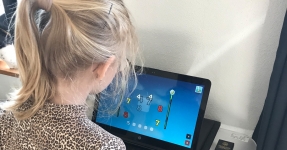How therapists use the ICF-model, and how you can use it when applying for a new assistive technology

There are some things you need to be aware of, when you are applying for a new assistive technology. One thing is, that you need to become good friends with the ICF models indications of your child’s functional level. That way you can make sure, that you and your therapist speak the same language.
The ICF-model is a model, that physiotherapists and occupational therapists use to evaluate the physical, mental and social functional levels on people across different diagnoses. With a better knowledge of the model, it will be easier for you to know what is important, when applying for an assistive technology.
ICF is short for International Classification of Functioning, Disability and Health. The model measures the functional level of for instance kids from three parameters: the body functioning and structures, activity and participation.
With a focus on body functioning and structure you look for changes in the child’s body-functions and if these changes lead to limitations for the child.[1] In this category you exclusively look at the body functions including the anatomic and physiologic functions/limitations.
If you look at the activity level, it is measured by looking at the child’s ability to for instance sit and make drawings in kindergarten, to play soccer or similar activities. Here the therapist examines whether the child is limited in these activities. The therapist for instance looks at the child’s abilities in everyday tasks and on how the limitations is expressed in the activity. You examine whether the child’s activity level is higher when using an assistive technology.
On the participation level you examine whether the child has achieved a better activity level by using an assistive technology, and if the child thereby has reached a higher participation level.
That can be seen if a child for instance is able to stand up and help making dinner with the family by the help of an assistive technology. Here we connect the achieved activity level with what it means for the child to be a participant in its life.
When you are applying for an assistive technology
Of course, it does matter what you write in our application for an assistive technology. But what is especially important for you to emphasize?
You can lean on the activity and the participation level in the ICF model to help you be specific in your application. It is important to be aware though, that the categories are blurry, and it can often be hard to tell the difference. What is an activity and what is participation?
Because of that it is important to show some specific examples of where the child is challenged in the activities and in participation during a normal day.
It can for instance be a description of how the child is challenged when trying to help with the cooking at home or in kindergarten, and how the assistive technology that you are applying for can help making this activity possible. Or it can be a description of how an assistive technology will make it possible for a child to participate in specific playing activities in the kindergarten or at home.
If you are in doubt about what to emphasize application, you are always welcome to contact us.





mail@iaid.dk T:+45 86 78 99 33